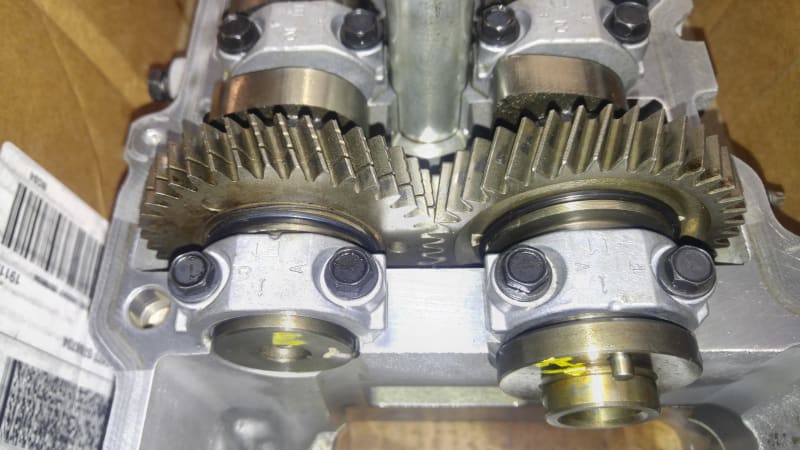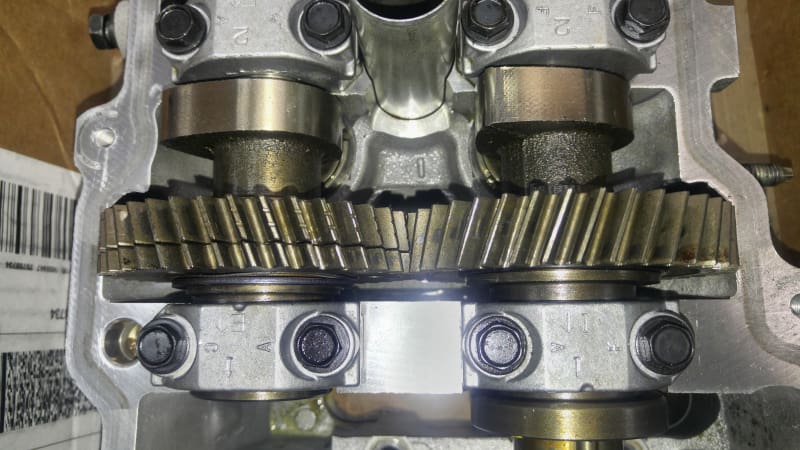chez311
Automotive
- Mar 24, 2015
- 1,426
I came across the pictured set of gears at work and it caught my eye - the gears are for a set of dual overhead cams. I can't tell for sure without taking it apart whether the gear itself it actually two pieces or just a single gear that was grooved, however upon close inspection it looks like it is actually two separate pieces. It struck me as very strange and I can't figure out why this might be designed in this manner. I know that driving a camshaft is probably a relatively low load application, especially for such a relatively large gearset, however I would think that at the very least there would be a significant reduction in strength due to the groove/two piece. The only thing I can really think of is that somehow this might be used to mitigate some NVH issue due to tooth mesh - has anyone ever come across something like this?




